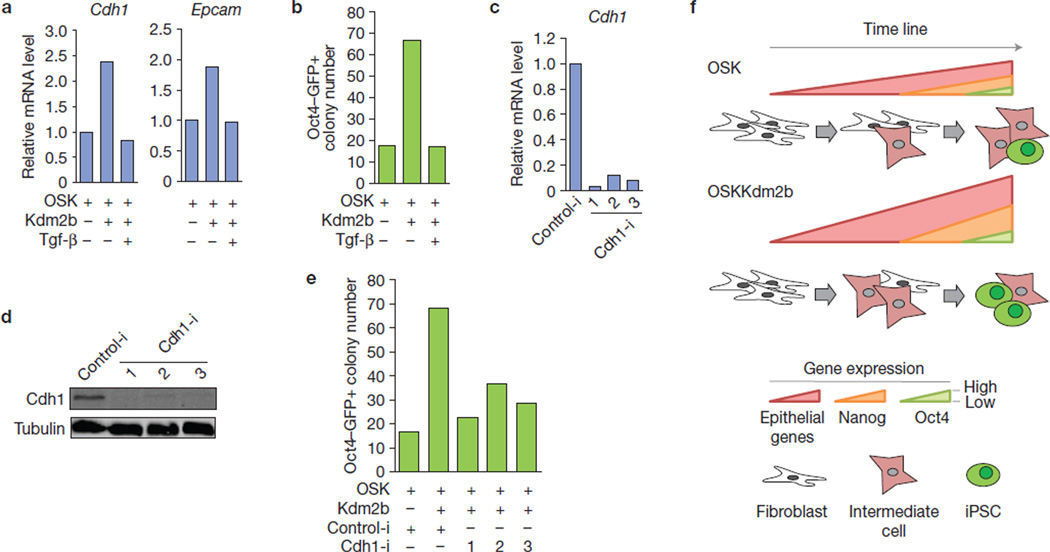Figure 8.
Inhibition of the expression of early-activated genes compromises the capacity of Kdm2b to enhance iPSC generation. (a) Upregulation of early-activated genes in reprogramming by Kdm2b is abrogated by administration of Tgf-β. RNA samples were collected from reprogramming cells with indicated treatments at day 12. (b) The capacity of Kdm2b to increase iPSC generation efficiency is negated by Tgf-β. Oct4–GFP+ colony numbers were calculated at day 16 of reprogramming. (c,d) RT–qPCR (c) and western blotting (d) confirmation of Cdh1 depletion. RNA and protein extracts were collected from ESCs transduced with three individual shRNAs against Cdh1 (Cdh1-i, 1–3) or control shRNA (Control-i). Full scans of blots are shown in Supplementary Fig. S6d. (e) Inhibition of Cdh1 by shRNA compromises Kdm2b-mediated enhancement of iPSC generation. Shown are Oct4–GFP+ colony numbers at day 16 of reprogramming. (f) Transcription cascade model explaining how Kdm2b enhances iPSC generation. Introduction of Kdm2b into the reprogramming cocktail leads to upregulation of epithelial genes that are activated early during reprogramming, which in turn causes an amplified transcription cascade that enhances the activation of Nanog and the generation of iPSCs. Data in a, b and e represent the mean of two independent experiments.

